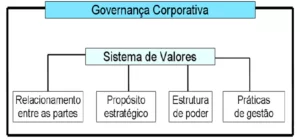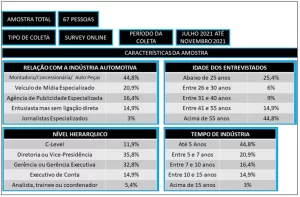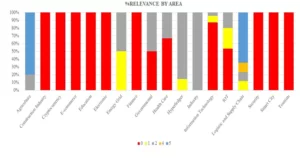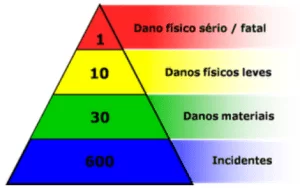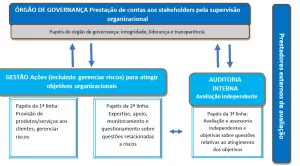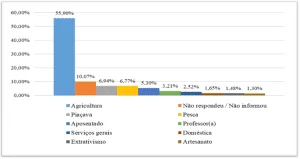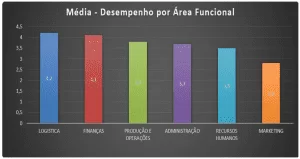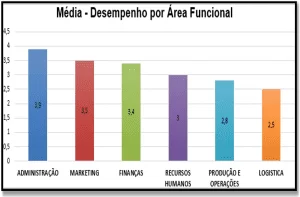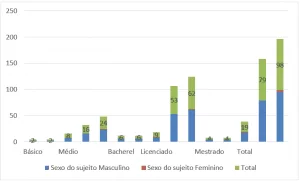MARTINHO, Felipe Miguel [1]
MARTINHO, Felipe Miguel. Project Management: A Study Considering the Success Criteria in a Contingency Approach. Multidisciplinary Scientific Journal. Edition 08. Year 02, Vol. 02. pp. 105-121, November 2017. ISSN:2448-0959
summary
Based on the understanding that each project is unique, possessing characteristics and specificities inherent to each one, this work reinforces that the conduction of a project must align with a contingency approach that proposes the need to manage projects in a generic way, but according to the characteristics and specificities of each project. It was searched through the bibliographic survey on the success criteria of projects, identify from the perspective of a contingency approach, what criteria of success should be monitored and what level of importance for project management. The results of this work show the significant influence of the type of project in the selection of success criteria and their importance, and the selection of these criteria allows an immediate analysis of the needs of the projects and the most appropriate and rapid decision making, identifying actions which must be taken to meet the expected results.
Keywords: Project Management, Project Success Criteria, Contingency Approach.
1. Introduction
In recent years, organizations, due to the need to develop initiatives focused on innovation and competitive advantage, focus their actions in the execution of projects. Thus, projects have represented a significant share of the companies 'investments, being their essential monitoring for the evaluation and decision making of the organizations' performance (Shenhar and Dvir, 2007).
For Vargas (2009), most projects start from a social, environmental, economic and political context in which they are planned and implemented according to their interests, triggering intentional and unintended impacts, being positive or negative.
Dinsmore (2010, apud MAZZINI JUNIOR and FERREIRA, 2010) complements that today, project managers are being more responsible and are looking at the results of their projects from a perspective that causes a smaller impact, analyzing the consequences for the environment for the people and the economy of the region concerned.
In this same line Pinto and Quelhas (2011) reinforce that industries, aiming to minimize losses in processes and environmental impacts directly or indirectly, invest more and more in the development of new technologies and integrated systems.
Since projects are the fundamental business of a project-oriented company, the success of the company is directly related to the success of the project and the core competencies to manage it. Therefore, it is difficult for two companies to manage projects in the same way, since each organization has particularities and a cultural base beyond the contracts for implementing project management (KERZNER, 2010 apud CARVALHO and BORGES, 2015).
In this line of reasoning, Kerzner (2010, apud CARVALHO and BORGES, 2015) complements that business management can not be seen as an isolated operational activity, since project management is increasingly related to business management of the company . In this project management scenario, the definition of success emerges from a simple combination of cost, time and quality elements to several other criteria, which involve the business of the organization as a whole and the project itself. Thus, there is a need to align the success factors of the organizations' projects with the company's business, in order to meet its strategic objectives.
According to the Project Management Institute – PMI (2013, p. 03), "(…) project is a temporary effort undertaken to create a unique product, service or result." Temporary, because each project has well defined, a beginning and an end; unique, since each product or service produced is different from any other product or service already produced or its like. Another characteristic that the project presents is that its elaboration is progressive, that is, throughout the project, we acquire more detailed knowledge about it.
For Vargas (2014, apud HIRAYAMA and NOVASKI, 2016), the project is a non-repetitive enterprise, having as characteristic a logical sequence of well defined actions, with beginning, middle and end, whose purpose is to reach a well defined goal, led by people that meet criteria and well-defined standards of resources, cost, time and quality.
What makes a project unique is temporality and uniqueness, that is, every project has a deadline for its realization, with a beginning and a definite end. Successful management is considered when the means available during the project realization were applied with maximum efficiency. Already the success in project management, is in the purpose of using the appropriate tools of this discipline, added to the success of the direct execution of the project manager. The exception to any project, is related to the triad formed by cost, term and scope. Thus, the project is considered a success, if the initial goal was met, if the scheduled deadlines were met and if the costs did not exceed the budget forecast in the execution of the initial project. The challenge posed to the project manager is to manage this trade off, since there are inseparable conflicts between each of the parts of this triad, in order to achieve the maximum benefits that result from the realization of the project (CARVALHO, RABECHINI, 2011) .
Considering the above, this work suggests an adjusted approach, since the projects have different degrees of difficulty, which leads to adapt the particularities of the project to a circumstantial perspective, since, a technique does not fit all the parts of a project.
This work is based on the understanding that each project is unique and has many specificities. In this way, the present research aims, from a bibliographical survey, to identify from a perspective of a contingency approach to project management, what are the criteria of success that should be monitored and their level of importance for this management.
2. Methodology
This article is structured in 6 sections. The initial stage was focused on a bibliographical research carried out in the review of the literature on Project Management in consultation with books, articles, specialized magazines and websites made available on the Internet. Section 2 presents the methodology used in the study. Section 3 presents the definition of success in projects and success criteria; Section 4 deals with the contingency question, the typologies of projects and the relationship management with the stakeholders; Section 5 presents the discussion and analysis of the results. The article ends in section 6, with the final considerations.
3. Success in Projects
The distinction between the terms Project Management Success and Project Success is important in defining "Project Success."
In relation to Project Management Success, De Wit (1988 apud CARVALHO and BORGES, 2015) and PMI (Project Management Institute, 2008), affirm that criteria evaluations are used to measure project management success. These criteria assessments cover traditional measures such as time, quality and cost.
In relation to Project Success, Barclay (2008, apud CARVALHO and BORGES, 2015) agrees with De Wit (1988) when he confirms the importance of the performance of stakeholders. De Wit (1988, apud CARVALHO and BORGES, 2015) goes beyond when it reinforces the consideration of the performance of all stakeholders involved in the project life cycle at all levels of management.
Cooke-Davies (2002) contributes by defining Project Success from the product or final result, always considering the satisfaction of the stakeholders.
3.1 Criteria for Success in Projects
To understand the success criteria in projects, it is necessary to understand and separate "Success Criteria" and "Success Factors".
For De Wit (1988, apud CARVALHO and BORGES, 2015), "Success factors" lead to project success directly or indirectly supported by inputs from the management system. Already, in "Success Criteria," the project is judged by its success, when criteria or measures are used from which a project is judged to verify its success or failure. The author criticizes the questioning of success measure by the triple constraint, reinforcing that they must be obtained through the objectives proposed in the projects and other success criteria such as compliance with the deadline and budget performance, contractor and client satisfaction and satisfaction of the entire team involved in the project including the project manager.
Both De Wit (1988, apud CARVALHO and BORGES, 2015) and Siegelaub (2010) mention PRINCE 2 (Office of Government Commerce, 2005) methodology, called the "sixth restriction", composed of known cost, scope and quality, plus risk and benefit constraints. The benefit dimension is expressed in achievable and measurable objectives; represents the value that the project is expected to deliver to the organization.
De Wit (1988, apud CARVALHO and BORGES, 2015) emphasizes that these restrictions have an interrelationship between them, and changes in one dimension affect the others. These dimensions need to be closely monitored, with the need to define tolerances; so actions can be taken when needed.
The author goes on to define the dimensions:
Atkinson (1999) attributes the success of projects to the performance measures of term, quality and costs, which later determined as a triple constraint or "iron triangle", which despite being widely reported in the literature, many authors consider these criteria as insufficient for measure project success. Thus, the same author proposes a division to understand the various criteria used to measure the success of projects separated by categories, as presented in table 1.
Table 1- Grouping the success criteria in projects
| CATEGORY | ||||
| SUCCESS CRITERIA | Iron Triangle | Information systems | Benef. for Organization | Benef. for Stakeholders |
| Cost; | Reliability; | Improved efficiency; | Satisfied users; | |
| Quality; | Shelf life; | Improved effectiveness; | Social and environmental impact; | |
| Deadline | Information; | Profit increase; | Development. Folks; | |
| Maintainability | Strategic goals, | Professional learning; | ||
| Learn organizational | Profit of the contractor; | |||
| Waste Reduction | Capable suppliers and satisfied staff | |||
Source: Adapted from Atkinson (1999)
Shenhar and Dvir (2007) believe that most projects should be analyzed based on their contribution to the organization's bottom line, since most organizational projects are part of the company's strategic management. Due to this, they propose that the success of the projects be questioned multidimensionally, demonstrating the business objectives and the strategic intention of the company.
The authors also suggest an analysis of the success of the project in the short and long term, based on five categories: impact for the client; impact on the team; preparation for the future; business and direct success and efficiency. They point out that the suggested structure is not universal, that is, despite being applied to several projects, they may not fit into others. This leads to an analysis of a contingency approach, being necessary to verify if the structure initially suggested meets the project or else, to add new perspectives to the definition of success criteria that are relevant to the organization and its projects.
Based on the five groups of measures, the authors suggest an evaluation of the project's success in the short and long term:
- Efficiency (or compliance with planned goals): presents operational focus to verify if the project was executed according to plan. It is a short term measure, with great relevance for the market.
- Impact to the client: it interpolates the interest of the main stakeholder of the project that is the client. It is the clear definition of how the final outcome of the project will meet the needs of the client, bringing benefits. Therefore, it is proposed to aggregate measures of quality and scope as well as qualitative measures of customer satisfaction.
- Team Impact: Measures the impact of the project on the work team. It is based on the idea that leaders provide a motivating environment for all members of their team, encouraging them and providing them with personal and professional growth. With this it is possible to evaluate the "value" that the team has for the organization.
- Business and direct success: this dimension reflects the financial performance of the company, that is, what direct and immediate impact the project represents for the company in relation to the achievement of results.
- Preparing for the future: reflects how the project will contribute in the long run with future improvements to the company's organizational structure in relation to new business opportunities and processes.
In Table 2, Shenhar and Dvir (2007) present the success dimensions of projects and their respective indicators.
Table 2 – Success dimensions of projects and their respective indicators
| PROJECT SUCCESS | ||||
| EFFICIENCY | CUSTOMER IMPACT | IMPACT FOR TEAM | BUSINESS AND DIRECT SUCCESS | PREPARING FOR THE FUTURE |
| Compliance with schedul e, Budget compliance, Gain, Other efficiency measures |
Compliance with requirements and specificat ions; Customer advantage ; Extension of u se; Customer satisfaction and loy alty; Brand recognition |
Team satisfactio n Team moral e Development of skills and abiliti es Team members growth Rete ntion of team members N o conflicts |
Sales, Profit s, ROI, ROEP, Cash Plan , Quality Service |
New technology; New market; New product line; New essential competence ; New organizational capacity; |
Source: Adapted Shenhar and Dvir, 2007
According to the perspectives of different stakeholders, Elattar (2009) presents some success criteria focusing on the participation of those involved in the project.
Table 3 presents the suggested criteria from the perspective of the owner, the developer and the contractor to evaluate the success of a project.
Table 3 – Success criteria from the perspective of each participant
| PARTICIPANT | |||
| SUCCESS CRITERIA | Owner | Developer | Hired |
| On time, within budget, Functional for intended use, Final result, Quality (manpower / products), Aesthetically pleasing, Return on investment, Construction must be marketable, Minimizes worsening in construction of a building | Content aware, quality product architecture, meet the development rate and profit goal, professional team achievement, meet the project schedule and budget constraints, marketable product or process, minimal construction problems, no lawsuits, acceptable socially, customer payment (trust), well defined scope of work (contract, scope and compensation are in agreement) | It meets the schedule, profit, below budget, specification of quality attended or separated, without judicial processes, expectations of all stakeholders clearly defined, customer satisfaction, good and direct communication, minimal or nonexistent surprises during the project | |
Source: Adapted from Elattar (2009)
4. Contingency approach
According to Carvalho and Rabechini Junior (2011), the project management literature has ignored the contingency question, since this literature assumes the position that all projects have the same managerial characteristics, thus suggesting an idea that through the reference guides a uniform management of projects. However, several authors have questioned this approach, strengthening the idea of the need for project management through a contingency approach according to the characteristics of the project and not in a global way.
The legend that "one-size-fits-all" has led to displeasure and discontent with project management (SHENHAR, 2001; SHENHAR et al., 2005).
In one study, the "one-size-does-not-fit-all" concept is both applicable to the real world and theoretically more grounded in academic research. In this paper, we present empirical evidence that, for each type of project, the significant factors do not present similarities, that is, they are different, reinforcing the idea that project success factors depend only on their nature (SHENHAR et al., 2005) .
Carvalho and Rabechini Junior (2010) verified that the interference of reference models, from the International Project Management Association (IPMA) and the Project Management Institute (PMI), take the mobility of project management due to lack of analysis and reflection on the need for the adequacy of the presented standards. Due to this, several authors propose forms of standardization of projects, based on a contingency approach, which makes clear the need for project management not in a global way, but due to its particularities.
Numerous are the circumstances that can achieve project management and the elements critical to its success, among them are stakeholder relationship management and project typology.
4.1 Typology of projects
In the set of circumstances that approach typologies of projects, the degree of difficulty of projects is a quantity usually quoted. Clark and Fujimoto (1991, apud CARVALHO and BORGES, 2015) advised a classification taking into account the difficulty of the internal organization of the product and its communication with the project.
Four families of factors were proposed by Vidal and Marle (2008) to show the difficulty of the projects. These are: the dependence of the project on its context, its correlations with the project, the size of the Project System and its variety.
Cleland and King (1967) and Maximiano (1997) propose typologies in which the degree of complexity is related to the uncertainty dimension, being known as two-dimensional typologies.
The Practical NCTP "Diamond" Model: demonstrates the shape of a diamond and presents four dimensions that are: technology, novelty, pace and complexity (SHENHAR et al. 2005; SHENHAR and DVIR, 2007).
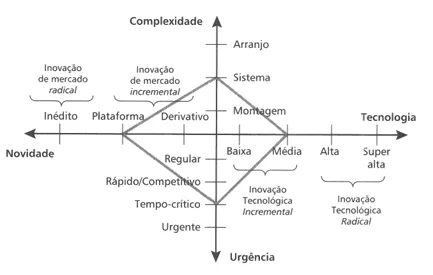
In Table 4 the description of the axes of the diamond model.
Table 4 – Description of the Diamond Model axes
| AXIS | NOVELTY | TECHNOLOGY | COMPLEXITY | URGENCY |
| CATEGORIES OF AXLES | -Derivative: Products are extensions and enhancements to existing products.
-Platform: products are new generations den linhas denproduto already existing. They replace old products in an already established Market. -Inédito: Products are new in the Market and transform new concepts or ideas into new products that had never been seen by the clients. |
-Low Technology: Projects are based on well-established, well-established technologies.
-Media Technology: Projects use mostly existing or basic technologies, but incorporate new technologies and features that did not exist in previous products. –High Technology: projects in which most of the technology used is new to the organization, but already exists in the Market and is available at the beginning of the project. -Super high Tecnol: projects based on new technologies that do not exist at the beginning of the project |
– Assembling: Projects involve creating a set of elements, components and modules combined into a single unit to perform a specific function.
– Systems: Projects involve a complex collection of interactive elements and subsystems, jointly performing multiple functions to achieve a specific operational need. -Vetor: Projects deal with a large set of systems that work together to achieve a common purpose. |
-Regular: projects in which time is not critical to the immediate success of the organization.
– Rapid / competency: projects developed to meet a market opportunity, a strategic position, or a new line of business. – Critical time: projects that must be completed by a specific date, which is restricted by specific event or window of opportunity. If the deadline is not met, the project fails. -Repentino: more urgent projects, which are designed to respond to a crisis |
Source: Adapted from Shenhar and Dvir (2007)
The authors Evaristo and Van Fenema (1999) classify the projects according to their composition and in relation to the number of location points. In the case of composition, they are classified as a single project or multiple projects and in relation to the number of location points, classified as single location or multiple location.
The Office of Government Commerce (OGC), in its Knowledge Guide called Managing Successful Programs (MSP), taking into account the relationship of the projects to the organization's strategies, classifies the programs into three categories and can be also applicable to projects. Are they:
- Vision-led: presents as a radical transformation of the business, a clear and well defined vision employing a top-down approach focusing on the strategic or innovative opportunity;
- Emergent: with a vision that comes from the inside out and a well-defined end goal, arises from uncoordinated initiatives requiring a joint approach;
- Compliance (mandatory): known as the "must do" program, leaves the organization unselected, that is, has to change, serving market forces (Office of Government Commerce, 2002).
In its Project Excellence Model, Westerveld (2003) classifies projects in terms of their orientation and proposes a typology based on five project areas. These are: total project management, product oriented; system-oriented; oriented and tool-oriented.
According to Rabechini Junior and Carvalho (2009), in projects in which managerial scripts are more homogeneous, the contingency approach is indicated, since it is based on the construction of typologies taking into account the importance of the analyzed context.
For the authors, the proposal of a contingency project management system is a great challenge, since each project has its own characteristics, making it impossible to treat the contingency system in a unique and orderly way, due to the large number of possible arrangements accomplish. In order to meet the proposal, it was decided to approach the theme by grouping the projects through a typology of their own, supported by the concept of group variable evaluation. They proposed a model of contingency approach based on typology of projects, linked in quadruples, in the format of "Is": Integration; Innovation; Impact and Immediate as indicated in Figure 2. They reinforce the information that, these axes, are considered essential for the management of projects (RABECHINI JUNIOR and CARVALHO, 2009).
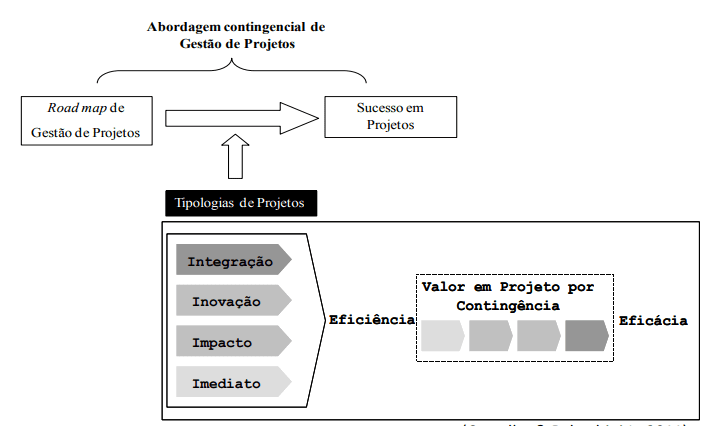
In Table 5, the authors describe the importance and the relation of the fourth axes, in a contingency approach model, taking into account the evaluation by groups of variables in project management.
Table 5 – Description of the fourth I's of the contingency approach model in projects
| AXIS | INTEGRATION | INNOVATION | IMPACT | IMMEDIATE |
| DESCRIPTION | Related to the need to "aggregate the areas of an organization, multidisciplinary teams and elements of diverse natures". | Related to "technological, market and information inaccuracies, lack of convictions, technological difficulties and instability". | Related to the "effects that projects generate on the environment, on the stakeholders, on human behavior and on the ethics of those involved." | Related to "project limitations, (…) setting deadlines, cost and quality". |
Source: Adapted from Rabechini Jr and Carvalho (2009)
Regarding the typologies of project classification, the authors affirm that there is no compliance, but it is necessary to determine a terminology common to the projects of a company for a better structuring of project management where it is possible to make a comparative study, prioritize the resources and verify the areas with the same focus that meet the nature of the project (RABECHINI JUNIOR and CARVALHO, 2009).
4.2 Stakeholder
The term Stakeholder was initially mentioned in an international memorandum at the Stanford Research Institute in 1963 whose definition for the term related the existence of these groups to the survival of an organization, and without them the organization could not exist. They went further, stating that these groups of Stakeholders are who supported the organization.
In Robert Edward Freeman's classic work (1984): Strategic Management: A Stakeholder Approach, the author defines Stakeholder as a group of people or an individual who can achieve or be reached by the purposes or goals of an organization.
Freeman (1984) proposes a study of stakeholders in three categories: transactional, process and rational. In the transactional category, it seeks to understand the relationships of the organization and its stakeholders with regard to transactions and negotiations between the parties. In the category of processes, it seeks the implicit and explicit understanding of how the organization manages the bond with its stakeholders. Already in the rational category, it seeks the understanding of who the organization's stakeholders are, as well as their real interest.
Mitchell et al. (1997), suggest to distinguish levels of stakeholders according to one or more particularities of relationship such as: urgency, legitimacy and power. Urgency is related to the level of attention required by stakeholder impositions. Legitimacy is related to the action and effect of perceiving or even assuming that delimited actions are expected and convenient within a given social framework, based on values, beliefs, norms and definitions. As for power, it is bound to force the will to accept. The authors complement that the existence of these particularities and their intensity, determines the degree of notoriety and evidence that the stakeholders assume from the perspective of the top management.
The way stakeholders interact and the circumstances in which they occur translates into "value creators" for the organization. These circumstances translate into three contexts: technological, market, and political-social contexts (CUMMINGS and DOH, 2000).
Kerzner (2010, apud CARVALHO and BORGES, 2015), defines the management of the relationship with Stakeholders, as a process involving stakeholder mapping activities, identification and classification of stakeholders; managing their expectations without compromising the organization's mission and vision. PMI (Project Management Institute, 2008) suggests that the mapping of stakeholders should be based on the level of power they have in relation to the project.
Once objectives are clearly established for the results and expected performance of the project, Varella (2010) reinforces that it is necessary to conduct the expectations of stakeholders from the beginning of the project. These expectations must be real and adaptable to the capacity of the project.
5. DISCUSSION AND ANALYSIS
The present work intends to identify from a perspective of a contingency approach, the criteria of success that must be monitored and its degree of importance for project management. The results of the bibliographic research allowed us to verify that the typology of projects influences the level of importance attributed to success criteria, as suggested by the literature such as Carvalho and Rabechini Junior (2011); Carvalho and Borges (2015); Clark and Fujimoto (1991 apud Carvalho and Borges, 2015); Vidal and Marle (2008); Maximiano (1997); Westerveld (2003); Shenhar (2001); Shenhar et al. (2005).
In relation to the stakeholders, a more comprehensive analysis is necessary, since the literature presented did not go into the topic, but only mentioned the role of these and their activities in the organization (see Mitchel et al., 1997, and Carvalho and Borges, 2015 And Freeman, 1984), making it clear that stakeholder management is an indicator of project success.
Final considerations
The result of this work showed the significant influence of the type of project in the selection of success criteria and their importance, and the selection of these criteria allows an immediate analysis of the needs of the projects and the most appropriate decision making, identifying actions that should be taken to meet the results presented.
It is emphasized that the theme is very broad, therefore, a deeper study of the theoretical model presented is suggested, comparing these criteria in practice, in field research, analyzing the advantages and disadvantages as well as the practicality in the choice.
A suggestion for future work, which Cummings and Doh (2000) cite, stakeholders are "value-creating" for the organization. The relationship with the stakeholders must be understood in the project management focus as a parameter of success to the project, in keeping with its expectations, without compromising the organization's mission and vision (Kerzner, 2010 apud Carvalho e Borges, 2015).
References
ATKINSON, R. Project management: cost, time and quality, two best guesses and a phenomenon, its time to accept other success criteria. International Journal of Project Management, (1999). http: //dx.doi. org / 10.1016 / S0263-7863 (98) 00069-6.
CARVALHO, M. M .; BORGES, J. G., Criteria of success in projects: an exploratory study considering the interference of variables typology of projects and stakeholders.Prod. [online]. 2015, vol.25, n.1, pp.232-253. Epub Apr 04, 2014. ISSN 0103-6513. http://dx.doi.org/10.1590/S0103-65132014005000019
CARVALHO, M. M .; RABECHINI JUNIOR, R. Contingent Project Management: Using managerial road maps to establish a flexible link between methodologies and project types. World Project Management, v. 6, n. 32, p. 66-73, 2010
Fundamentals in Project Management: Building competencies to manage projects: theory and cases (3. ed.). São Paulo: Atlas, 2011.
CLELAND, D., & KING, W. Systems analysis and project management. New York: McGraw-Hill, 1967.
COOKE-DAVIES, T. The "real" success factors on projects. International Journal of Project Management, 2002. http://dx.doi.org/10.1016/S0263-7863(01)00067-9.
CUMMINGS, J.L., DOH, J.P., Identifying Who Matters: Mapping Key Players in Multiple Environments, California Management Review, v. 42, n. 2. P. 83-102, 2000. https://doi.org/10.2307/41166034.
ELATTAR, S. Towards developing an improved methodology for evaluating performance and achieving success in construction projects. Scientific Research and Essays, 4 (6), 549-554. 2009
EVARISTO, R., & VAN FENEMA, P. C. A typology of project management: Emergence and evolution of new forms. International Journal of Project Management, 17 (5), 1999. 275-281. http://dx.doi.org/10.1016/S0263-7863(98)00041-6
FREEMAN, R. Strategic management: A stakeholder approach. Boston: Pitman 1984.
HIRAYAMA, E.T; NOVASKI, O., Proposed procedure for project management of devices for industrial machines. Journal, Perspectives in Technological Sciences, v. 5, n. 5, May 2016, p.67
MAXIMIANO, A. Project management: how to turn ideas into results. São Paulo: Atlas 1997.
MAZZINI JUNIOR, E.G .; FERREIRA, A.R. Project management as a planning tool in the design of new products: the case of the furniture industry in Santa Maria-RS. 2010, ISSN 1984-9354
MITCHELL, R., AGLE, B., & WOOD, D. Toward a theory of stakeholder identification and salience: defining the principle of who and what really counts. Academy of Management Review, 1997, 22 (4), 853-886.
OGC, Office Goverment Commerce; Managing Succesful Projects with PRINCE2 ™. Edition 2005, Posted by TSO (The Stationery Office).
PINTO Leonardo Dias; ABSTRACT: The model of Risk Analysis Applied in the Management of Industrial Solid Waste – article ISSN 1984-9354 published in the annals of the VII National Congress of Excellence in Management – Niterói – Rio de Janeiro – 12 and 13 Aug. 2011
PMI – Project Management Institute – PMI. (2008). A project management knowledge guide (PMBOK guide). Newton Square: Project Management Institute.
RABECHINI JUNIOR, R, & CARVALHO, M. M. Management of innovative projects in a contingency perspective: theoretical-conceptual analysis and proposition of a model. Revista de Administração e Inovação, 6 (3), 63. 2009.
SHENHAR, A. J. One size does not fit all projects: Exploring classical contingency domains. Management Science, 2001. 47 (3), 394-414. http://dx.doi.org/10.1287/ mnsc.47.3.394.9772
SHENHAR, A.J., DVIR, D., MILOSEVIC, D., MULENBURG, J., PATANAKUL, P., REILLY, R., RYAN, M., SAGE, A., SAUSER, B., SRIVANNABOON, S ., STEFANOVIC, J., & THAMHAIN, H. Toward a NASA-specific project management framework. Engineering Management Journal, 2005. 17 (4), 8-16. T
SHENHAR, A., & DVIR, D. Reinventing project management: The diamond approach to successful growth and innovation. Boston: Harvard Business School Press. 2007.
SIEGELAUB, J. M. From the triple to the sixth restriction: a prominent model for project control in PRINCE2. World Project Management, 6 (33), 2010.
VARELLA, L., – Improving Project Manager skills – Success in managerial performance – 2nd triage – Brasport – Rio de Janeiro, 2010 – p. 1 to 13
VARGAS, R. Project management – Establishing competitive differentials. 7ª ed. Rio de Janeiro: Brasport, 2009. DIGITAL BOOK / https: //issuu.com/ricardo.vargas/docs/gp7/6
VIDAL, L. A., & MARLE, F. Understanding project complexity: Implications on project management. Kybernetes, 37 (8), 1094-1110. 2008 http: //dx.doi. org / 10.1108 / 03684920810884928
WESTERVELD, E. The Project Excellence Model®: linking success criteria and critical success factors. International Journal of Project Management, 2003. 21 (6), 411-418. http: // dx.doi.org/10.1016/S0263-7863(02)00112-6
[1] UNIARA / SP, Brazil

